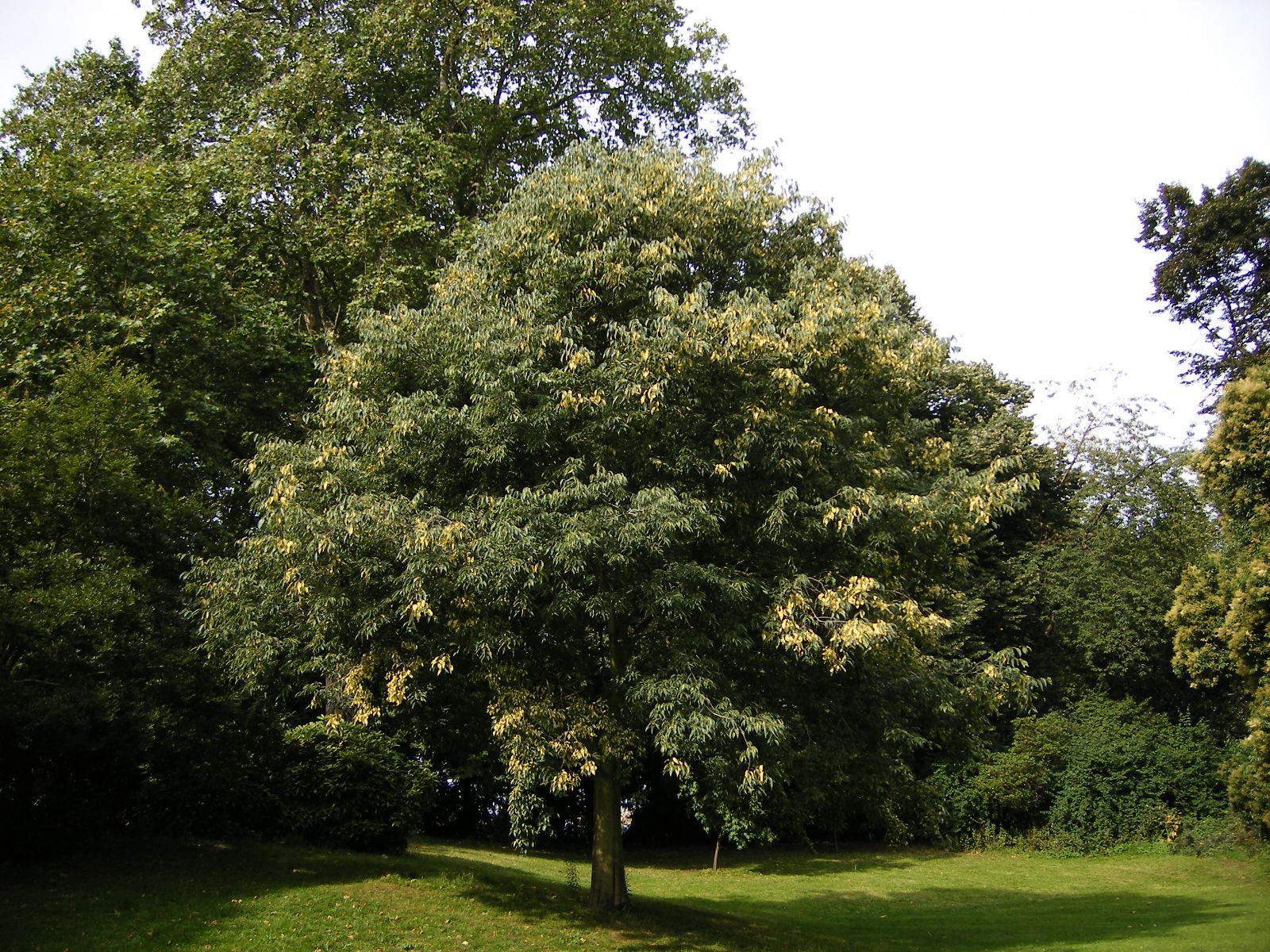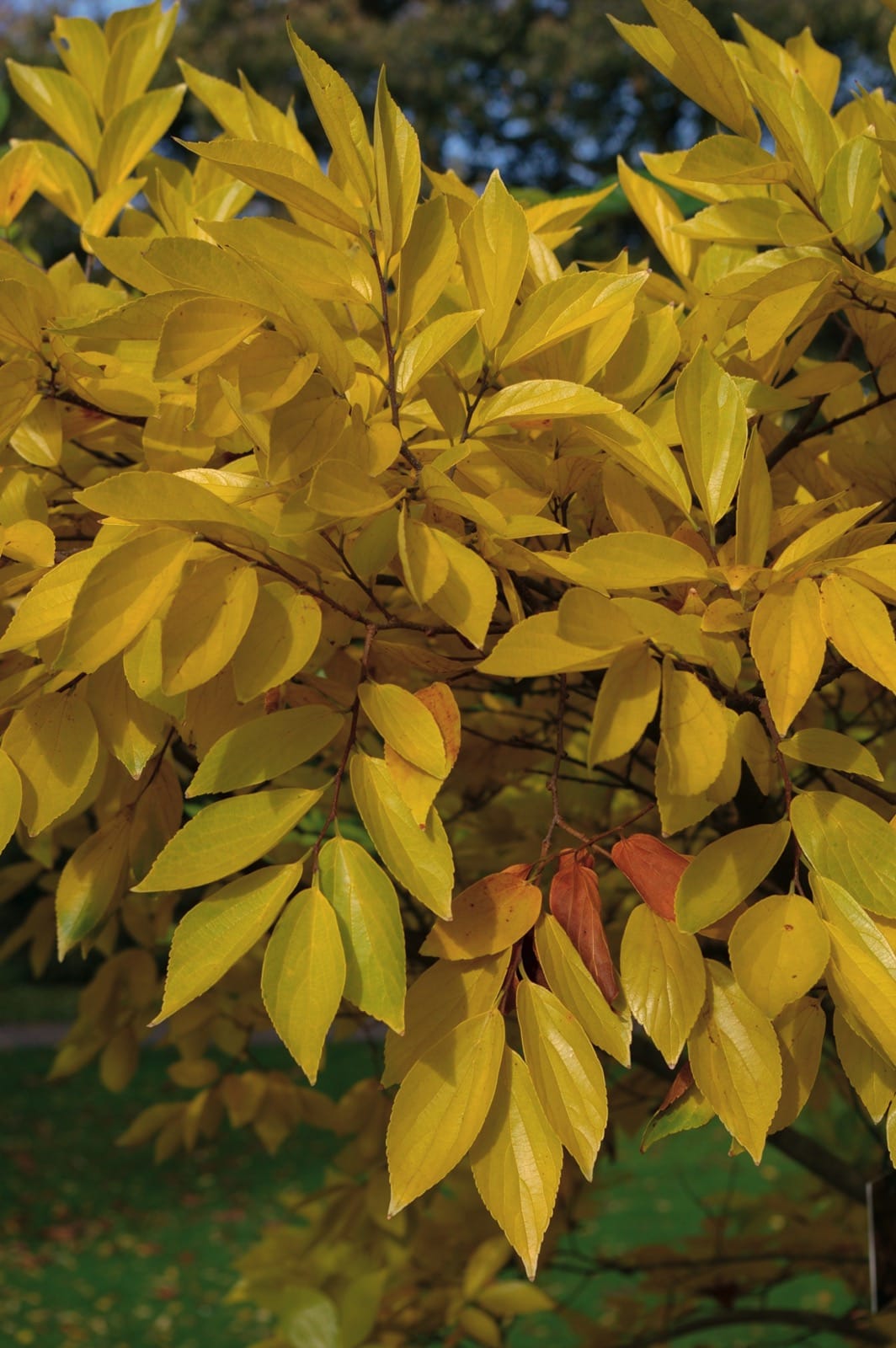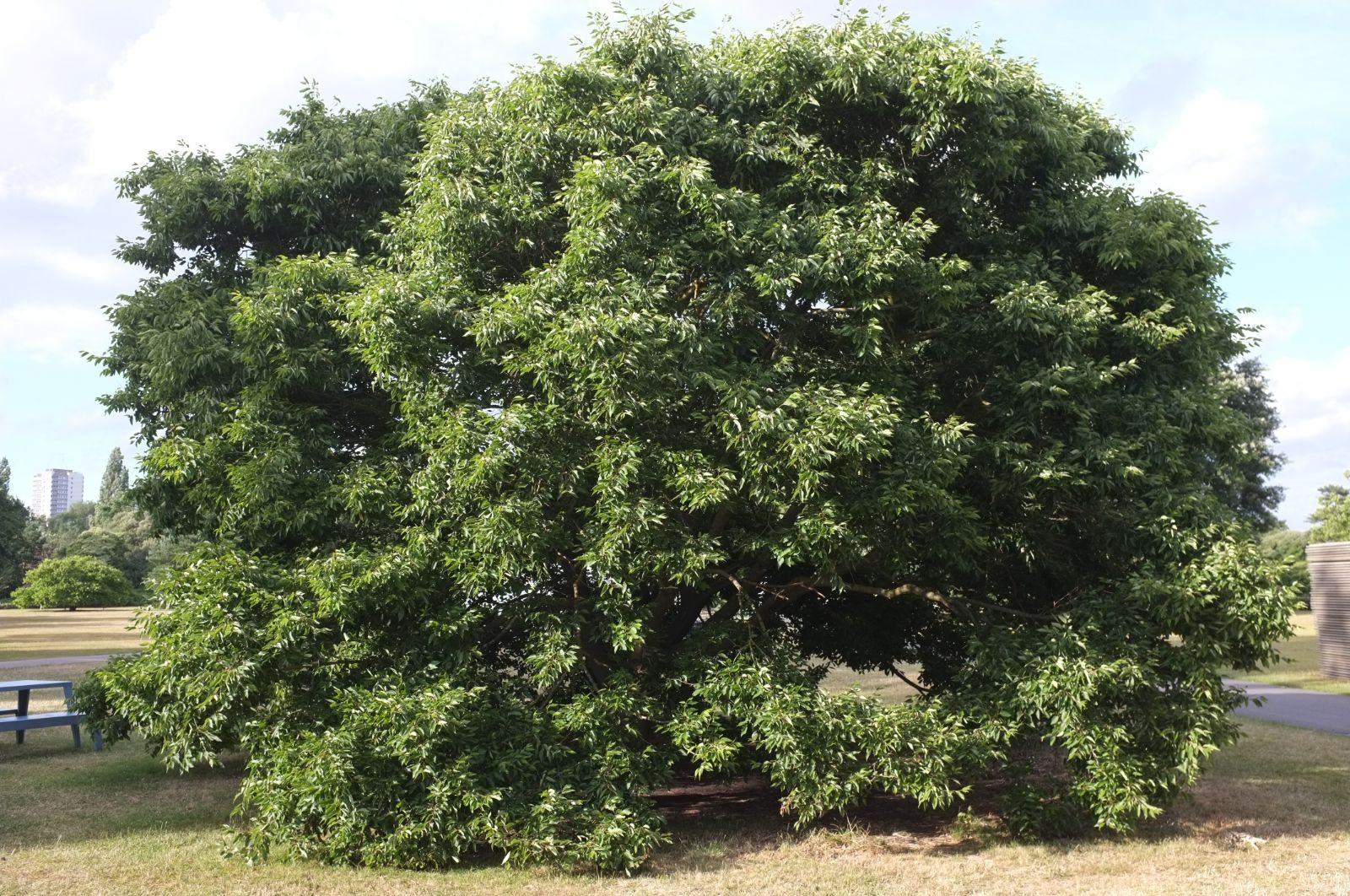Celtis
Credits
Article from Bean's Trees and Shrubs Hardy in the British Isles
Article from New Trees by John Grimshaw & Ross Bayton
Recommended citation
'Celtis' from the website Trees and Shrubs Online (treesandshrubsonline.
Family
- Cannabaceae (or Ulmaceae)
Common Names
- Nettle Trees
- Hackberries
Species in genus
Celtis has between 60 and 100 species and is primarily tropical in distribution, with a limited number of subtropical and temperate species. Celtis species are unarmed, deciduous or evergreen trees. Stipules are present or absent. The leaves are alternate and petiolate, with entire or serrated margins. Each leaf has three veins originating at the base. The flowers are arranged in panicles, racemes or clustered cymes. In temperate areas they are produced in early spring before the leaves unfurl. They are generally rather small and insignificant, and may be unisexual or hermaphrodite. Staminate flowers occur in the lower leaf axils of one-year-old branches or grow directly from the stem (cauliflorous). Female and hermaphrodite flowers occur together in the upper leaf axils. The corolla and calyx are not differentiated from each other. The fruit is a fleshy drupe with a bony endocarp (Fu et al. 2003). Celtis was traditionally placed in the Ulmaceae, but DNA-based studies suggested splitting the family in two. Ulmus and Zelkova remain in the Ulmaceae, while genera such as Celtis and Trema Lour. were transferred into the Celtidaceae. Further studies, however, revealed that both Cannabis L. and Humulus L. (Cannabaceae) formed part of the Celtidaceae and the two families were combined, with the oldest name (Cannabaceae) taking precedence (Sytsma et al. 2002).
Celtis is at first sight an undistinguished genus with no outstanding features, and is seldom enthused over by authors, but its species can be extremely hardy and are often able to tolerate harsh or difficult conditions, including the salt-spray of urban roadsides (Sternberg 2004). A number of selections have been made from North American species for their merits as street trees or for autumn colour (Dirr 1998, Sternberg 2004). It seems probable that some of the more recently introduced Asian species will have similar qualities, but many Celtis enjoy a warm summer to ripen their wood properly (Wharton et al. 2005) and do not flourish in much of maritime western Europe. Although tolerant of poorer conditions, Celtis will perform best and make the finest trees in good soil conditions, having particular requirements for good drainage and an open site (Wharton et al. 2005). In North America native Celtis are prone to various pests and diseases, especially a nipple gall and a tendency to form witches’ brooms following mite damage and powdery mildew infection (Dirr 1998). It is not clear if the Asian species are afflicted in the same way. Propagation is normally by seed, although Bean (1976a) says that grafting onto stocks of C. occidentalis is possible. Birds greatly appreciate the fruits: I (JMG) have observed Venetian pigeons performing extraordinary acrobatics to feed on the fruits of C. australis.
Bean’s Trees and Shrubs
Celtis
Nettle-trees
A group of deciduous, unarmed trees, sometimes shrubs, allied to the elms, consisting of fifty to sixty species, a small proportion only of which are hardy. They are found in S.E. Europe, the Near East, N. America, and China. Leaves alternate, mostly three-veined, and unequal-sided at the base. The nettle-trees have no beauty of flower, these being small and greenish; the flowers are unisexual, but both sexes occur on the same tree, the male or pollen-bearing ones a few together in a cluster near the base of the new growths; the seed-bearing or female flowers solitary, or two or three together in the axils of the young leaves. Fruit a drupe, solitary on a slender stalk, one-seeded. The fruit affords the best distinction between the nettle-trees and the elms, the latter having dry, winged fruits.
As garden trees the species of Celtis make elegant and shapely specimens, yet of no particular merit or beauty, except that the leaves of several of them turn bright yellow in autumn. In warmer countries the timber is valuable, especially that of C. australis. The fruit of this species is sweet, and is said to have been the lotus of the ancients – that delicious fruit which constituted the food of the Lotophagi, and made those who ate it forget their own country (Treasury of Botany, i., p. 245). Other species have fruits edible in their native countries.
The nettle-trees like a good loamy soil and a well-drained position. They are best propagated by seeds, but when these are not obtainable grafting on stocks of C. occidentalis must be resorted to. Seeds of this species, if they do not ripen here, are always obtainable from American seedsmen.
There is little to distinguish the different cultivated species in a general way, except the leaves. Of those here dealt with, C. glabrata and C. bungeana are distinct in having no down on the leaves; C. laevigata is the only one with uniformly or nearly uniformly entire leaves; and C. australis has lanceolate, very downy leaves.







